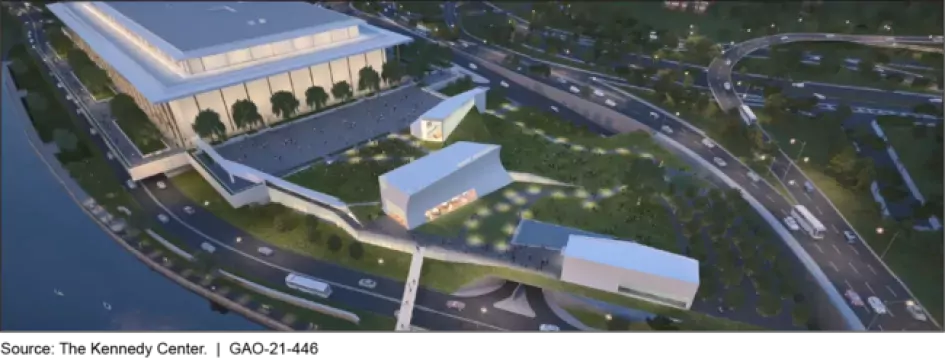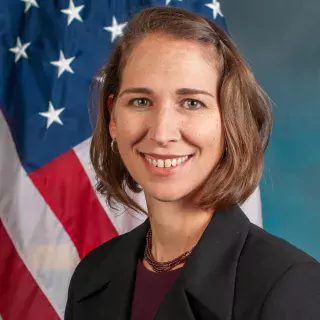As Kennedy Center Turns 50, We Look At Its Recent Expansion and Ways to Improve Its Use of Capital Improvement Funding
This month, the Kennedy Center for the Performing Arts celebrates its 50th anniversary and its first, full-scale performance productions since closing in March 2020 due to COVID-19.
In today’s WatchBlog post, we look at recent improvements to the Kennedy Center’s facilities and ways it could minimize long-term costs in order to maximize its funding.
Improvements to the Kennedy Center in the Lead-up to Its 50th
The Kennedy Center receives about 3 million visitors each year and sits on a 17-acre spot overlooking the Potomac River in Washington, D.C. Its main building contains about 1.5-million square feet, including 4 major theaters and several smaller theaters, 5 public galleries, and office space. The Kennedy Center spends about $40 million annually to repair, renovate, operate, and maintain its buildings; these expenses are paid through federal funding.
The Kennedy Center also recently expanded performance and educational spaces through its REACH facility, pictured below. The REACH offers an additional 130,000 square feet of green space and 72,000 interior square feet that includes classroom, rehearsal and performance spaces, which are housed in 3 pavilions and several underground spaces.
Kennedy Center's Original Building with the REACH Expansion in Foreground
Image

Our review of capital improvement spending
While the expansion was funded privately, its ongoing repairs, operations, and maintenance are federally funded. Because of this, Congress asked us to review the impacts expansion could have on the Kennedy Center’s operations and maintenance costs, as well as opportunities to reduce ongoing repair and maintenance costs. In our May report, we found ways it could improve when planning for future projects, which could reduce long-term costs. For example, the Kennedy Center had not updated its capital planning policies and procedures for over 15 years, nor had it comprehensively analyzed the life-cycle costs. Lifecycle costs involve not only design and construction, but also repairs, maintenance, and operations over the entire life of a facility. So these were not fully utilized for its projects, including the REACH expansion. As a result, the Kennedy Center couldn’t ensure that it had a consistent, repeatable process for managing projects or that it was making decisions early in the planning of projects to minimize long-term costs to the federal government.
At the time of our review, the Kennedy Center had met most recommended practices for operations and maintenance, including developing an operations and maintenance plan, using a specialized information system to help manage its activities, and using automatic control systems to enhance energy efficiency. However, we found that its operations and maintenance program did not have fully defined policies and procedures. Better defining this program could help the Kennedy Center provide the highest quality services related to the operations and maintenance of its facilities.
We made 5 recommendations to the Kennedy Center, which could improve its use of federal funding for managing its facilities. GAO congratulates the Kennedy Center for 50 years of carrying forward President Kennedy’s vision to serve as a leader for the arts across America and around the world.
- Comments on GAO’s WatchBlog? Contact blog@gao.gov.
GAO Contacts
Related Products

GAO's mission is to provide Congress with fact-based, nonpartisan information that can help improve federal government performance and ensure accountability for the benefit of the American people. GAO launched its WatchBlog in January, 2014, as part of its continuing effort to reach its audiences—Congress and the American people—where they are currently looking for information.
The blog format allows GAO to provide a little more context about its work than it can offer on its other social media platforms. Posts will tie GAO work to current events and the news; show how GAO’s work is affecting agencies or legislation; highlight reports, testimonies, and issue areas where GAO does work; and provide information about GAO itself, among other things.
Please send any feedback on GAO's WatchBlog to blog@gao.gov.



